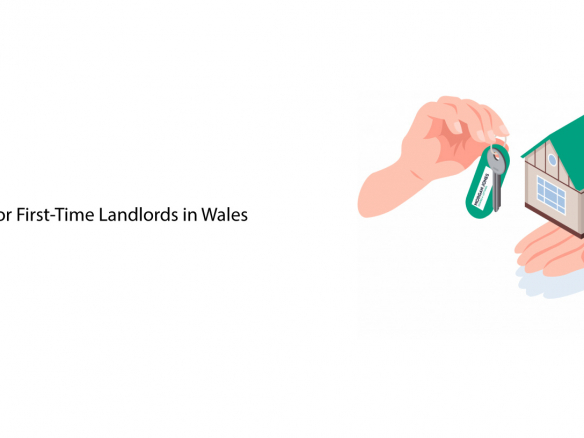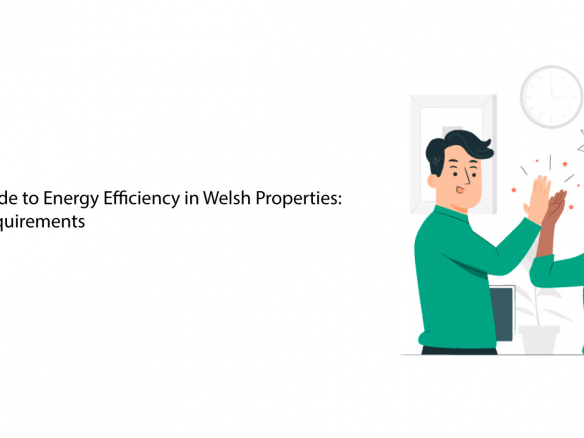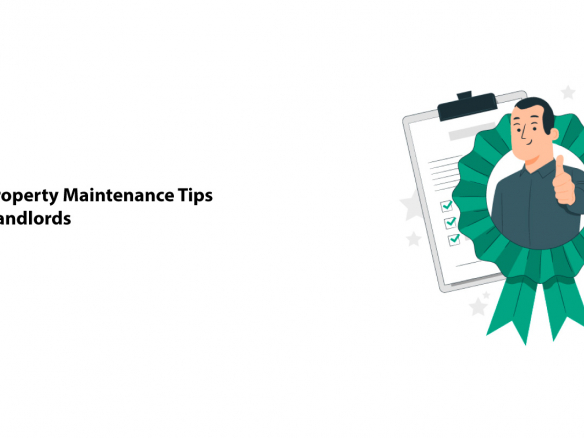Choosing the right letting strategy is crucial for property owners in South Wales, whether they’re based in bustling Swansea or the scenic Gower Peninsula. Choosing between short-term and long-term lettings can significantly impact your rental income, property management workload, and investment returns. Understanding the nuances of each approach is key to maximising your property’s potential in this diverse and dynamic market.

This blog post aims to provide property owners and investors in South Wales with a clear understanding of the pros and cons of short-term and long-term lettings.
By exploring the benefits and challenges of each strategy, we aim to help you make an informed decision that aligns with your financial goals and lifestyle preferences.
This post will delve into the key differences between short-term and long-term lettings, focusing on how each option impacts rental income, management requirements, and tenant relationships. We’ll also discuss essential market considerations in South Wales, such as local demand, property location, and regulatory factors. By the end, you’ll have a comprehensive understanding of which letting strategy might best suit your property in South Wales.
Understanding Short-Term Lettings
Short-term lettings refer to rental agreements typically lasting from a few days to several weeks, often catering to tourists, business travellers, or temporary residents. In South Wales, short-term lettings are commonly seen as holiday lets, Airbnb rentals, and corporate housing. For instance, a cottage in the Gower Peninsula might be rented out as a holiday let, attracting tourists seeking a coastal retreat. At the same time, a modern apartment in Swansea could be listed on Airbnb to appeal to visitors attending local events or exploring the city’s attractions.
Pros of Short-Term Lettings
Higher Rental Income Potential:
Short-term lettings can generate significantly higher rental income than long-term rentals, especially during peak tourist seasons. For example, a holiday let in Swansea or the Gower Peninsula can command premium rates during the summer months, festivals, or special events.
Flexibility to Use the Property Personally:
One significant advantage of short-term lettings is the flexibility it offers property owners. When the property is not rented out, owners can use it for personal stays, making it an ideal option for those who want a vacation home that also generates income.
Opportunities to Capitalise on Events and Local Attractions:
South Wales hosts numerous events and boasts popular attractions, making short-term lettings a lucrative option. Property owners can take advantage of high demand during events like the Swansea Airshow or when tourists flock to natural landmarks like Rhossili Bay and Brecon Beacons.
Cons of Short-Term Lettings
Increased Management and Maintenance Efforts:
Short-term lettings require more intensive management compared to long-term rentals. Frequent guest turnover means more cleaning, maintenance, and administrative tasks, which can be time-consuming and costly if not managed efficiently.
Variable Income Due to Seasonal Demand Fluctuations:
Income from short-term lettings can be unpredictable and heavily influenced by seasonal demand. While summer months might bring in substantial income, off-peak seasons could see significant drops in occupancy, leading to periods of low or no income.
Regulatory Challenges:
Operating a short-term rental in South Wales can come with regulatory hurdles. Local councils may impose restrictions, licensing requirements, or additional taxes on short-term rentals, particularly in popular tourist areas like Swansea and the Gower. Property owners must stay informed about these regulations to avoid penalties and ensure compliance.
By weighing these pros and cons, property owners in South Wales can determine if short-term lettings align with their financial objectives and lifestyle needs.

Understanding Long-Term Lettings
Long-term lettings refer to rental agreements typically lasting six months or more, providing tenants with a stable living arrangement and landlords with consistent income. These traditional tenancy agreements are standard in urban areas like Swansea, Neath, and Llanelli, where demand for residential housing is driven by local employment opportunities, universities, and families seeking permanent homes. For example, a three-bedroom house in Llanelli might be released to a family under a 12-month contract, providing the landlord a steady rental income throughout the year.
Pros of Long-Term Lettings
Steady, Predictable Income:
One of the primary advantages of long-term lettings is the steady, predictable income they provide. With tenants committed to a longer lease, landlords can count on consistent monthly payments, making it easier to plan finances and manage cash flow.
Reduced Management Workload:
Compared to short-term lets, long-term rentals require less day-to-day management. Once a tenant is in place, the need for frequent cleaning, check-ins, and marketing is significantly reduced, freeing up time and reducing ongoing costs for the landlord.
Greater Tenant Stability and Lower Vacancy Rates:
Long-term tenants often provide greater stability, with lower vacancy rates than short-term rentals. This stability can result in fewer disruptions and a more predictable rental schedule, which is particularly beneficial in areas like Neath and Swansea, where demand for long-term rentals remains strong.
Cons of Long-Term Lettings
Lower Rental Income Potential:
Long-term lettings generally offer lower rental income potential compared to short-term lets. While the income is steady, it may not match the higher rates that could be achieved with short-term rentals, especially in high-demand areas during peak seasons.
Less Flexibility in Accessing the Property:
With long-term tenancies, landlords need more flexibility in accessing their property for personal use or upgrading. The property is typically occupied throughout the lease term, limiting the ability to make changes or use the property for individual stays.
Challenges with Tenant Disputes and Evictions:
Managing long-term tenants can be challenging, particularly if disputes arise or if a tenant fails to pay rent. Eviction processes can be lengthy and legally complex, especially in the UK, where tenant rights are strongly protected. This can result in financial losses and delays in regaining possession of the property.
Market Considerations in South Wales
Local Demand and Trends
In South Wales, the demand for short-term and long-term rentals is shaped by various factors, including tourism, student populations, and local employment opportunities. Short-term rentals are in demand in tourist-heavy areas like the Gower Peninsula, where holidaymakers flock to enjoy the stunning coastline and outdoor activities. Swansea also sees a high demand for short-term lets, driven by events, business travellers, and visitors exploring local attractions.
On the other hand, long-term rentals are favoured in urban areas such as Swansea, Neath, and Llanelli, where a robust local economy, universities, and family-friendly neighbourhoods create a steady demand for residential housing. Swansea’s large student population, driven by Swansea University, fuels the demand for long-term rentals, particularly near the university and city centre. Similarly, areas with significant employment opportunities, like Port Talbot and Bridgend, also experience consistent demand for long-term tenancies.
Property Location
The location of a property within South Wales plays a crucial role in determining whether short-term or long-term letting is more viable. With its mix of urban amenities and proximity to beaches, Swansea offers opportunities for both letting strategies. Long-term rentals are popular in the city centre and surrounding areas due to the steady demand from students and professionals. Meanwhile, properties closer to the waterfront or in scenic areas like Mumbles can be lucrative as short-term holiday lets, especially during the summer months.

The Gower Peninsula, known for its breathtaking landscapes and outdoor activities, is ideal for short-term lettings. Properties in this area can command premium rates during peak tourist seasons.
In contrast, Neath and Llanelli, with their more residential nature and proximity to key transport links, are better suited for long-term rentals, providing stable income and lower vacancy rates.
Regulatory Environment
Understanding the regulatory environment in South Wales is essential for property owners considering either short-term or long-term lettings. Short-term rentals in popular tourist areas like Swansea and the Gower Peninsula may be subject to specific local council restrictions, including licensing requirements and planning permissions. For example, Swansea City Council has regulations that may require property owners to obtain planning permission to operate short-term rentals, mainly if the property is used exclusively for holiday lets.
Council tax is another consideration, with some councils in South Wales charging higher rates for properties used as short-term lets compared to those used for long-term rentals. Additionally, the Welsh government has introduced measures that allow local councils to impose a council tax premium on second homes, which can affect the profitability of short-term letting.
For long-term lettings, landlords must comply with the Renting Homes (Wales) Act 2016, which sets out the rights and responsibilities of both landlords and tenants. This includes providing secure tenancy agreements, adhering to deposit protection schemes, and meeting safety standards for rental properties.
Choosing the Right Letting Strategy
Property owners in South Wales need to consider their personal financial goals, management preferences, and risk tolerance when deciding between short-term and long-term lettings. Short-term lettings may be the ideal choice if your primary goal is to maximise income and you have the time and resources to manage frequent guest turnovers. This strategy offers flexibility and the potential for higher earnings, particularly in tourist hotspots like Swansea and the Gower Peninsula. However, long-term lettings might be more suitable if you prefer a steady, predictable income with minimal management effort. This approach reduces the need for constant tenant sourcing and property upkeep, providing stability and lower risk over time.
Property Type and Condition
The type and condition of your property can significantly influence the best letting strategy. Modern apartments in urban areas like Swansea are well-suited for short-term and long-term lettings, depending on location and market demand. These properties typically attract professionals and students for long-term rentals while appealing to short-term visitors looking for convenience and amenities.
On the other hand, traditional cottages or homes with character, particularly in scenic areas like the Gower Peninsula, are often more lucrative as short-term holiday lets. These properties attract tourists seeking unique, authentic experiences, especially if they are well-maintained and offer desirable features like sea views, gardens, or proximity to outdoor activities. Conversely, properties requiring significant renovations or those in more residential, less touristy areas may be better suited to long-term lettings, where stable occupancy and regular income are the priorities.
Maximising Rental Income
Whether you choose short-term or long-term lettings, there are several strategies you can employ to maximise your rental income. Property upgrades—such as modernising kitchens and bathrooms, improving energy efficiency, or adding high-speed internet—can increase your property’s rental value and appeal. For short-term lettings, consider enhancing the property’s attractiveness by incorporating stylish, comfortable furnishings and offering amenities like parking, a welcome pack, or local guidebooks.
Effective marketing is crucial for both letting strategies. Listing your property on multiple platforms like Airbnb, Booking.com, and local tourism websites can boost visibility for short-term rentals. High-quality photos, detailed descriptions, and positive reviews are key to attracting more bookings.
For long-term rentals, working with a reputable estate agent in South Wales, like Morgan Jones, can help ensure your property is marketed to the right audience and leased quickly.

Finally, consider using professional management services to handle day-to-day operations, especially for short-term lettings. This can include everything from guest communication and bookings to cleaning and maintenance, allowing you to benefit from rental income without the associated workload. Property management services can assist with tenant screening, rent collection, and legal compliance for long-term lettings, ensuring a smooth and profitable rental experience.
Choosing the right letting strategy is crucial to maximising the potential of your property in South Wales. We encourage you to carefully consider your circumstances and what each option entails. For expert advice tailored to your specific needs, consult with Morgan Jones. Our team of experienced estate agents can help you navigate the South Wales property market and choose the best letting strategy to meet your goals.
We’d love to hear from you! Share your experiences with short-term or long-term lettings in South Wales, or ask questions in the comments section below. If you want personalised advice, don’t hesitate to contact Morgan Jones directly. We’re here to help you make the most of your property investments in South Wales.
Visit our Contact Page or contact us at 01792 651311 to start the conversation.








Join The Discussion